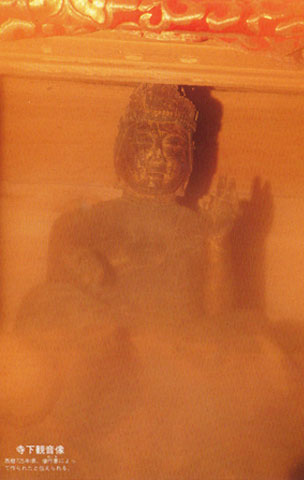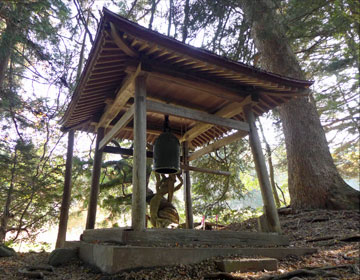Terashita Kannon
This Kannon hall has a long history, originating from the Kaicho-zan Omono-ji Temple, which was built over a period of five years starting in 724.
It is said that the Grand Priest Gyoki (668-749) was the founder of the temple, and the statue of Kannon that is housed there is also said to have been created by Gyoki.
Later, in 1186, Futsunushi-no-Mikoto was enshrined in the Kannon Hall, and since then, it has been revered as a sacred place of syncretism between Shinto and Buddhism.
In the Meiji period, due to the Shinbutsu Bunri Edict, which banned the syncretism of Shinto and Buddhism, Kannon and Futsunushi no Mikoto were enshrined separately, and the current Kannon Hall was built. The previous shrine building continues to be Ushioyama Shrine, which enshrines Futsunushi no Mikoto.
Beside Terashita Kannon Hall there is a bell tower. The temple bell, cast in 1719, is engraved with the "Record of the Decline of Omotsu-ji Temple", a summary of the history of Terashita Kannon Hall, said to have been written by the monk Kozan, who rebuilt Omotsu-ji Temple after it was burned down by lightning during the Kamakura period. This temple bell is designated as a tangible cultural property by Hashikami Town.







